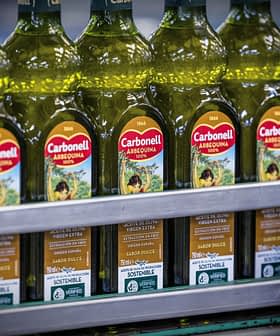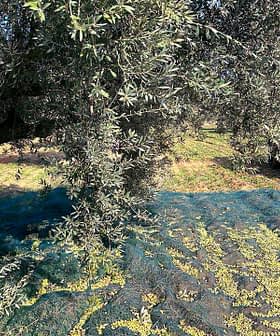Despite Spain’s historically low harvest, estimated to be just 662,411 tons, domestic sales have remained strong in the first half of 2023.
According to Cristóbal Cano, the secretary general of the Union of Small Farmers (UPA), olive oil sales in May reached 94,350 tons, including 12,000 tons of imported oils.
Overall, exports and domestic sales in Spain reached 731,220 tons of olive oil in the first eight months of the marketing year, which began in October 2022.
See Also:Farmers and Consumers React to Rising Olive Oil PricesCano said these figures demonstrate strong domestic demand for olive oil, despite the record-high prices at origin for all grades of olive oil. “This shows that the consumer is faithful to the healthiest fat that exists,” he said.
While strong sales have buoyed the sector’s confidence, there has been increasing concern that the 526,000 tons of olive oil stocks, the lowest total in recent years, will be enough to tide the market over until the start of the 2023/24 harvest.
“[Spain’s] very low production means that, despite the fact that sales have stabilized, we will not reach an available volume of more than 1,370,000 tons, including imports, stock and final production,” Cano said.
“A piece of information that, not because it was expected, is no longer worrying and confirms our bad forecasts of reaching the lowest stock between campaigns in recent years,” he added.
Despite strong domestic sales, lower production has resulted in Spanish olive oil exports falling by 30 percent by volume in the first sixth month of the marketing year. However, rising prices mean exports by value only dropped by 5 percent, with sales abroad earning €1.6 billion.
According to data from Spain’s Ministry of Agriculture, Fisheries and Food, Spain has exported 397,000 tons of olive oil since the start of the marketing year. Cooperatives estimate that May’s exports will reach 58,810 tons.
By destination, exports have fallen with all of Spain’s trading partners, with the exception of Russia, to which exports increased by 8 percent in the first half of the current crop year.
Shipments to Italy, the largest buyer of Spanish olive oil, dropped by more than 50 percent in that time, falling to 71,325 tons.
To offset the country’s poor production, imports increased by 1 percent in volume but, again, due to higher prices, rose by 43 percent in value.
While imports remained steady from Portugal (45,723 tons) and Tunisia (32,300 tons), the two largest exporters to Spain, purchases from Greece (13,310 tons), Turkey (7,276 tons) and Italy (8,856 tons) increased.
“Consumption continues to be guaranteed,” Cano said. “Sufficient oil is available to guarantee supply. And the price is currently stabilized at reasonable levels for the traditional olive grove.”
“We are going to find the problem with the next crop year because the rains that have fallen, although they have been good, will not alleviate the large losses that we have suffered due to the high temperatures of last April,” he concluded.








